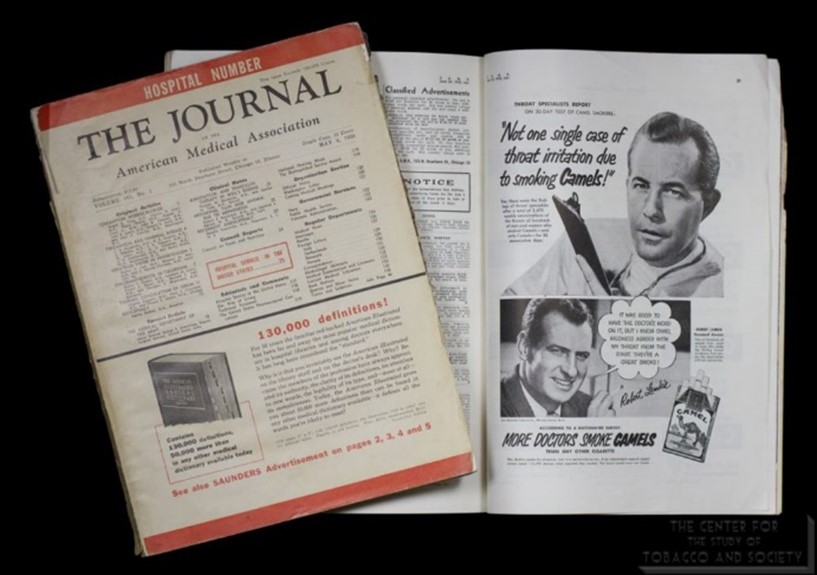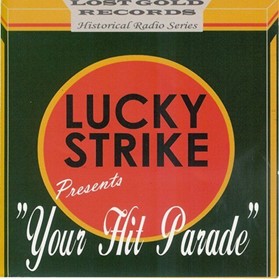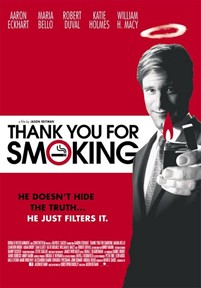This is Chapter 4 of my new book, working title “The Industry Playbook: Corporate Cartels, Corruption and Crimes Against Humanity” that is being published online chapter by chapter.
Advertising is just one of a multi-pronged strategy to influence people. And of that it is considered the lowest, and possibly least impactful ways by propagandists such as Edward Bernays. He wrote in his book, Propaganda:
“The conscious and intelligent manipulation of the organized habits and opinions of the masses is an important element in democratic society. Those who manipulate this unseen mechanism of society constitute an invisible government which is the true ruling power of our country. We are governed, our minds are molded, our tastes formed, and our ideas suggested, largely by men we have never heard of…. It is they who pull the wires that control the public mind.”
This is because people know that companies that advertise want to influence them. Meanwhile, PR is purposefully more covert. It aims to influence, and does so best, by being hidden behind-the-scenes and thus keeping your defenses down.
PR is where the majority of the Tobacco Playbook lies because of how it successfully influences the opinions of people in covert ways.
It was in the 1920s that Liggett & Myers, followed by American Tobacco, hired Bernays. He worked for them for many years. The “Reach for a Lucky Instead of a Sweet” campaign was spearheaded by Bernays.
In 1929, Bernays proposed the Tobacco Information Service Bureau, a PR arm for American Tobacco. Finding that it was mostly only men that smoked, Bernays sought to increase the female market. He launched the “torches of freedom” campaign in order to get women to smoke in public. How so? By tying cigarettes to women’s liberation. In the Eastern Day Parade Bernays made sure photographers were there to capture women smoking.
He expected controversy from the campaign, which he then used to get more publicity. The result was that women began to smoke almost as much as men.
Bernays would use surveys not just to measure public opinion, but artfully to shape it. He led the charge of getting cigarettes used in film.
“Persuasion, by its definition, is subtle,” says a PR executive quoted in Toxic Sludge is Good for You. “The best PR ends up looking like news. You never know when a PR agency is being effective; you’ll just find your views slowly shifting.”
Just how far can propaganda go? In 1934, Lucky Strikes were packaged in green, which as a color was out of fashion. Bernays set out on a six-month campaign to make green the fashionable color.
While it is tougher to gauge the success of this campaign, the fact that such a thing was even attempted shows the power of propaganda. Based on previous successes, Bernays had the audacity to attempt such a thing. Look at the thinking behind this. We’re going to make green a more fashionable color…to unconsciously sell more Lucky Strike cigarettes that come in a green package.
In 1935, American Tobacco developed the legendary musical variety show, Your Hit Parade. This show had a 24-year run on the radio, and a ten-year run on TV in the 50’s. The whole time, it was sponsored by Lucky Strike Cigarettes.
Influencing the public at large was only part of the effort. As negative science started to come to light it became more important to focus propaganda on doctors and scientists.
In 1947, the American Medical Association convention had doctors forming long lines to get free cigarettes. Big Tobacco’s cozy relationship would go on for many years. This Camel advertisement was in the 1950 issue of the Journal of the American Medical Association (JAMA). Part of the purpose of advertising was to incentivize useful editorial as we saw before.

Former president and CEO of Hill & Knowlton, Robert Dilenschneider admitted “the notion that business and editorial decisions in the press and media are totally separate is largely a myth.”
Once again it was December of 1953 when the Big Tobacco executives got together in New York to discuss the pressing situation. President of Brown & Williamson, T.V. Hartnett, wrote a memo regarding this secretive meeting of their aims. “Cancer research, while certainly getting our every support, can be only half an answer…The other side of the coin is public relations…Finally, one of the roughest hurdles which must be anticipated is how to handle significantly negative research results, if, as, and when they develop.” And this is when the PR firm Hill & Knowlton was hired by the group.
At the start of the next year, Hill & Knowlton published “A Frank Statement to Cigarette Smokers” in 448 newspapers across 258 cities on behalf of their clients. This was purely a PR piece, to shape the minds of the public that Big Tobacco was on their side and would get to the bottom of the science. And doing so garnered a positive response.
This statement announced the creation Tobacco Industry Research Committee (TIRC). While engaged in science, this really was nothing more than a wing of the PR firm. Throughout 1954, the TIRC budget was almost $1 million. Almost all of this money went to Hill & Knowlton, specifically media ads and administrative costs. Very little went to research.
In April of 1954, the TIRC issued a white paper titled A Scientific Perspective on the Cigarette Controversy which is eighteen pages of quotes from doctors and scientists doubting the link between cancer and cigarettes. Over 200,000 copies were distributed to doctors and media.
A 1966 internal memo specifically said that the TIRC “was set up as an industry shield.” This memo goes on to say that “special projects were instituted at Washington University, Harvard University, and UCLA. Bill Shinn noted that the industry received a major public relations ‘plus’ when monies were given to Harvard Medical School.”
Brandt writes, “Each time the TIRC issued a press release, the Hill & Knowlton organization had initiated ‘personal contact.’ The firm systematically documented the courtship of newspapers and magazines where it could urge ‘balance and fairness’ to the industry. Hill & Knowlton staff, for instance, assisted Donald Cooley in preparing an article entitled ‘Smoke Without Fear’ for the July 1954 issue of True Magazine and then distributed more than 350,000 reprints to journalists throughout the country.”
Dr. Clarence Cook Little would head the Scientific Advisory Board (SAB) of the TIRC. In 1955, Hill & Knowlton focused on building up his and his works’ credibility. “Hill & Knowlton operatives made Little available to editors, journalists, and others in the media. Most of these people, lacking much scientific sophistication, eagerly portrayed both sides of this ‘controversy.’ The controversy, after all, made it a story,” shares Brandt.
The SAB would complain later on. A number of these scientists warned that they were “disturbed by a misunderstanding of the relationship between the TIRC and the SAB.” That they were being used as an endorsement of everything the TIRC said. These scientists didn’t know that that was the whole point! PR came first. Science came second.
Controversy was a PR win because they could claim over and over again the science was unclear. In 1955, Edward Murrow covered the tobacco controversy in two consecutive broadcasts at CBS. Hill worked hard to make sure the coverage was a “balanced one”.
In 1958, the TIRC drafted “Another Frank Statement to Smokers.” Although science had progressed, the PR organization continued to spread doubt and skepticism regarding the science. They wrote “The cause of cancer remains as much a mystery as ever.” (Note that this line is used by many other industries today when and where their products are specifically implicated.)
By 1960, the “scientific controversy” about tobacco causing cancer was now widely debated in the media and by the public. Later on, we’ll show how clear the science actually was by this point.
Changing names of institutes is part of the PR game, once a name has bad associations. This occurred in 1964 when the TIRC became Center for Tobacco Research (CTR). In 1966, a Special Projects program of the CTR established “expert scientific witnesses who will testify on behalf of the Industry in legislative halls, in litigations, at scientific meetings, and before the press and public.”
In April 1968, Hill & Knowlton ceased working for Big Tobacco, ending it’s 15 years of running public relations. A long line of other PR firms would be worked with over the coming years.
The propaganda message, that the science was unclear, was used for decades. A 1969 memo from Brown & Williamson (B&W) reads, “Doubt is our product since it is the best means of competing with the ‘body of fact’ that exists in the mind of the general public.” How do you sell doubt? Public relations.
A wide range of organizations would be used for this. Another B&W internal memo reads, “Obviously, care must be exercised not to ‘over-commercialize’ the agreement of B&W’s association with the NAACP. However, if managed with sensitivity, this association can be linked positively to the minority buying public…Clearly, the sole reason for B&W’s interest in the black and Hispanic communities is the actual and potential sales of B&W products within these communities and the profitability of these sales.”
In other words, they give money for the advancement of minorities, but they don’t actually care about minorities. Instead, it is a PR play with the “sole reason” aimed at generating sales and customers.
The term public relations may not be the most useful. That’s because the target is not just the public but often times even more so professionals. When we see PR we need to think “professional relations” as well. As Bernays clearly stated, “If you can influence the leaders, either with or without their conscious cooperation, you automatically influence the group which they sway.”
These are all targets of a Big Tobacco’s PR over the years.
- The public at large
- Journalists
- Doctors
- Scientists
- Lawmakers/Politicians
- Organizations
- Schools
That’s one of the things that most people miss. Authority figures, such as journalists, scientists and doctors, are not above being propagandized. In fact, they often make even better targets than just the public themselves because of their authority. Successful PR to these professionals will further spread the message using their authority to do so to the rest of the public.
A great PR strategy is multi-pronged relying on a wide variety of tactics targeting a wide variety of people. When you have lots of money like Big Tobacco did you can afford such efforts. The fact that so much of the PR was successful would only mean they’d have more money to spend even more on it.
For a video presentation of this you can watch the movie Thank You For Smoking. The protagonist is a tobacco PR man played by Aaron Eckhart. This shows the art of spin at it’s very best.
Key Takeaways on Public Relations
- Edward Bernays, the father of propaganda, was hired by Big Tobacco, where many of the PR methods were put to use. This included the famous “torches of freedom” campaign which made women smoking publicly okay culturally and the “in” thing to do.
- PR is not just public relations but professional relations. A key quote from Brandt is “For Bernays, expertise was but a commodity for the PR expert to purchase and exploit.”
- PR tactics include:
- Using public opinion surveys not just to measure public opinion, but to shape it.
- Deny and debate scientific facts everywhere you possibly can.
- Having PR work alongside advertising efforts.
- Formation of organizations with helpful sounding names, such as Bureau of Scientific Information and Tobacco Industry Research Committee, that are typically nothing more than outlets of propaganda.
- Changing the name of those organizations when they’ve acquired a poor reputation.
- Giving money to schools and other organizations for good PR, but also to influence behavior of members of those organizations.
- Establishing and utilizing a network of journalists that would give favorable coverage. Every bit of favorable coverage or press releases would be spread far and wide throughout the PR firm’s network.
- Boosting the credibility and supporting authority figures, such as Dr. Little, that would spread their propaganda.
- Making sure that no criticism or threat went unanswered.
- Utilizing your advertising budget to influence editorial coverage.
- Getting cigarettes used in film and elsewhere in culture.
Please leave any comments or questions below. Feel free to share it with anyone you’d like.
Links to all published chapters of The Industry Playbook can be found here.
You can also support this project with a tip.




Big Pharma has used all of its intelligence and resources to both copy and make more sophisticated the Tobacco play book. America spends 17% of GDP on medical care. That is 17 cents of every dollar spent in the USA. For comparison, the USA has the world’s largest military budget and consumes 3.4% of the GDP. By all markers this is an outstanding success for corporate profit-not so much for the benefit of the public.
The latest epidemic should yield hundreds of billions of dollars in profit to add to their success. Pfizer has let it be known (on their website) that everyone will need the booster shot that they have developed for the Delta variant and that it’s pricing will ‘be more in line with traditional vaccine pricing of between 150 and 200 USD per dose.’ It and other variant booster shots will be needed every year. That will be potentially trillions of dollars over a 10 year period. Genius, pure genius! I wonder what we are going to do when we are spending 90% of GDP on healthcare!
Don’t worry. If the inventor of the mRNA vaxx is right, there won’t be enough survivors of the vaxx to make any more money.